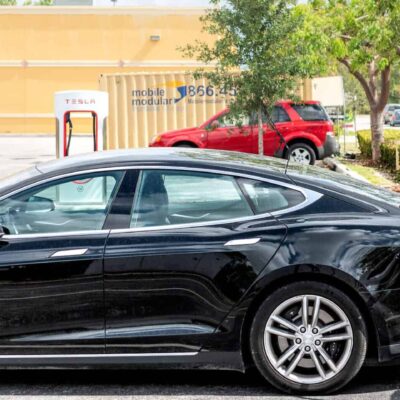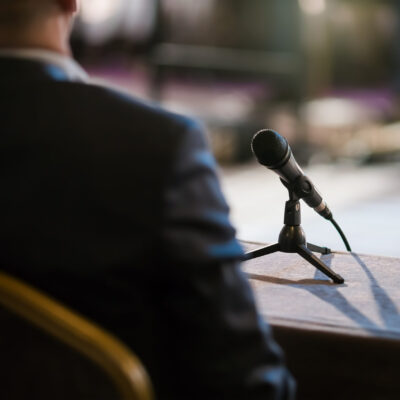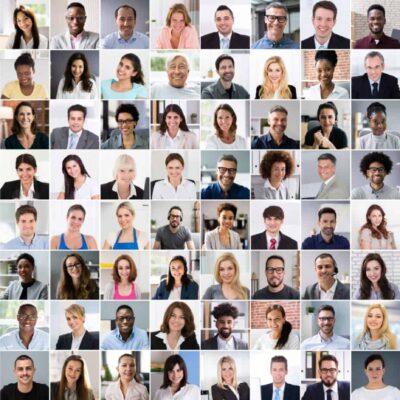As we examine the implications of innovation across industries, one thing is becoming evident: wireless technology is infiltrating every aspect of our lives, creating an intricate network of interconnected devices that are in constant communication with one another. And after examining the impact of elevated artificial intelligence (AI) capabilities with WIT affiliate expert and noted technology analyst Scott Steinberg, it is indisputable that the wireless communications industry offers a great basis for future standards in widely unregulated spaces such as AI, cryptocurrency, and more.
When it comes to wireless technologies like WiFi, 4G, 5G, 6G, and beyond, guidelines are developed by a combination of industry and academic regulators. These researchers, engineers, and operators come together to formulate the standards that make devices interoperable, ensuring they can communicate efficiently and offer a seamless user experience. But these standards no longer apply to our cellular devices; now, with increased connectivity in our vehicles, homes, and more, the ever-expanding Internet of Things (IoT) is prompting concerns over security and privacy. So how can standard-setting entities begin building the necessary regulatory framework to move the market forward?
Rethinking Regulatory Methods
Looking at the discussion surrounding standards, Steinberg thinks that we must focus on use cases rather than the fundamental way in which the technology operates. Considering how technology could be used by the consumer is a radically different method of thinking about standards than has been seen in the past. Most of the time, when plotting these standards and considering regulations, you’re thinking about the baseline level of features you have to offer. Steinberg feels that historically, regulators don’t necessarily think about the million- and one-ways people can utilize the technology- like how it can be combined with other innovations, its application in different scenarios, and more.
This lack of consideration is somewhat ironic. Sometimes, technology purveyors cannot grasp the full breadth of use for their innovations, and consumers end up engaging with them in ways that the creator never expected. And this oversight can create complications in a world where everything is real-time, connected, and moving at warp speed. Without planning and proper standard-setting, the industry will be playing catch-up. So, what can we do?
Steinberg thinks that having conversations with industry experts and implementing more future-forward thinking is essential in mitigating potential challenges with these innovations later. Dissecting this technology and asking “what if?” questions can get you in the habit of progressive reasoning, and he hopes to see government and law industry leaders utilize this train of thought more often. He explained, “It’s not that we can’t [be more future-forward thinkers]. It’s just that the challenges most of us are so focused on are the here and now, the day-to-day, the minute-by-minute. We’re not given the time to project two, three, five, let alone 10 years out in the future and plan for that.”
Stepping Up Security
There are many unforeseen uses for each technology that hits the market, creating a laundry list of potential challenges with each forthcoming innovation. And when it comes to safety, it seems that the scope of the digital security perimeter is expanding rapidly because of the number of connected devices, online apps, and interaction touchpoints it defends. Further, Steinberg explained that more sensitive information is being offloaded online and to technology every year, without much thought from those providing it despite the fact that cybersecurity concerns continue growing by leaps and bounds.
According to Steinberg, we currently see more than 600 new cybersecurity threats every minute. With hackers and ransomware groups increasingly working like organized criminals, these security breaches are continually happening at a larger scale. He explained, “When they’re plotting these hacks and data breaches, you’re talking about multiple groups involved. You’re talking about some of the most sophisticated threat actors doing coordinated actions on a grand scale and on top of it, they’re creating playbooks that less sophisticated cyber criminals can then utilize.” Even the most elevated security teams can only work for certain durations, while these hackers have unlimited time to coordinate their attacks.
To mitigate this, he feels we need to adopt a zero-trust security posture where you have to verify everything multiple times over. You must proactively look for potential points of failure and constantly be scanning for discrepancies, not only in actions on accounts but in overall network and system behavior. But the paradox with these problems lies with humans themselves.
Hindering Human Error
Steinberg explained, “The irony of this whole cybersecurity and digital privacy stuff is no matter how good the tools and technologies are you put in place, it’s often human error through which leaks and breaches occur.” So, when it comes to legal liability, how can you prepare for the foreseeability of human error? The simple answer: by learning about the technology as much as you can. Through this, you can create multiple levels of fail-safes, providing checks & balances and multifactor authentication. This allows you to verify things at every turn, equipping you to cordon off access to information.
Moreover, you also must understand where data resides in your organization- how it flows and where there may be touch points to get to it. It’s not a question of if a hack, a data breach, or a compromise is going to occur; it’s a question of when- making it less about threat prevention and more about threat response and mitigation. The fact of the matter is that hackers can throw a million arrows at your computer networks, apps, and devices every day, only one of which must penetrate to get through. As Steinberg said, “What you see is once somebody is in your system, the average dwell time can be months, meaning that hackers can be hiding out there undetected for days on end. And, by the time you realize that there’s a threat or a compromise, oopsie- it’s too late to do anything about it.”
To help hinder human error, you must be very proactive in your approach to cybersecurity by planning for threats and thinking of the types of challenges that may arise. Through this, you will create more flexibility and resiliency in the workforce, allowing your team to better adapt on the fly while lessening these attacks.
IoT in the Industry
As more and more things in the industry are becoming AI and Internet of Things controlled through advancements in wireless technology, we may see IoT-operated factories and facilities that behave differently than their designers expect. So how can people prepare? As Steinberg explained, “I don’t think it’s any secret that we’re in the middle of a fourth industrial revolution, one that is increasingly fueled by smart technology. We have over 55 billion devices now connected and talking to one another, which means that we’re entering this era of a more self-aware and self-sustaining business.” Essentially, factories are increasingly going to self-regulate, self-repair, keep an eye on pollution and waste, and adjust operations in real time.
Going forward, we must realize that we cannot cede everything to technology. There still needs to be a deep level of oversight and human interaction, requiring people to become more data literate through improved data visualization tools that will help them understand if their systems are operating appropriately. In the future, Steinberg sees AI and machine learning becoming somewhat like a utility; similar to water or electricity, you will be able to turn it off and on as you go. But we still must keep a watchful eye as humans on what’s going on, and we must train ourselves to get better about working with this technology if we want to make sure that things are steering in a positive direction and stay on track. If not, disputes will surely follow.
Stay tuned for more insights from our conversation with WIT affiliate expert Scott Steinberg. Mr. Steinberg is hailed as one of the world’s most celebrated futurists and strategic innovation consultants. He has been featured in hundreds of media outlets from CNN to TIME to The Wall St. Journal, with the Fortune 500 calling him a “defining figure in business and technology” and “top trendsetter to follow.”
Next in this series, we’ll cover innovations in virtual reality and the implications of these advancements on the market.
Learn more about our top industry and technical experts in wireless technology.




